2020 KTM 890 Duke R - First Ride Review

The bike Evans should have bought
Are you sick of us talking about KTM Dukes yet? And by “us” I primarily mean Evans. Anyone who’s followed this space knows he bought a 790 Duke and has modified it to his version of what an R model should be. The list is relatively short and sweet, and covers the primary weaknesses of the 790. So let’s go down the list:
2020 KTM 890 Duke R
| Engine | 19.5/20 |
| Suspension/Handling | 14.0/15 |
| Transmission/Clutch | 8.0/10 |
| Brakes | 9.5/10 |
| Instruments/Controls | 5.0/5 |
| Ergonomics/Comfort | 8.0/10 |
| Appearance/Quality | 9.0/10 |
| Desirability | 9.0/10 |
| Value | 9.0/10 |
| Overall Score | 91/100 |
– Apex Pro 6500 Cartridges And 6746 Shock
– KTM PowerParts Wave Brake Discs
– Brembo 19 RCS Corsa Corta Master Cylinder
– Dynojet Power Commander V And Rottweiler Performance Power Plate
Finally, when taken as a collective whole, here’s Evans’ take on how all of the upgrades work together. Evans says he likes his bike, swearing up and down the modifications have completely transformed the 790 and the wrenching process has been fun, too. He’s even gone on to say things like “it’s the journey, man, not the destination.”
Get the Flash Player to see this player.
Heartbreaker
I hope he truly means that, because after spending a day on the new, 2020 KTM 890 Duke R, my only advice to Evans was “whatever you do, DO NOT ride that bike.” I couldn’t stand the thought of seeing Evans in anguish after riding the 890 and realizing, if he’d only waited a year, he would have had a superior machine. It’d break my little heart. Let alone Evans’. If you own a 790 Duke, I mourn for you. Of course, I kid (a little). The 790 Duke is fine, but the 890 is, well, better.
As you’re no doubt aware, the Coronavirus pandemic has wreaked havoc on several industries, and the motorcycle business was not immune to those effects. The press launch for the 890 Duke R was supposed to be at some exotic location, with KTM staff on hand to answer questions. Instead, it was canceled.
Our consolation prize was an afternoon spent riding a pre-production 890 Duke R up one of our favorite SoCal mountain roads. What we lost in being able to ride at some exotic location we made up for by avoiding jet lag, skipping frustrating airport delays, and by riding KTM’s Super Scalpel through roads we know like the back of our hand. Keeping a socially responsible distance from others would be a piece of cake too, since the 890 carves its way through a canyon road so well it’s hard for others to be anywhere near you. A Super Scalpel indeed.
Riding Impressions
Normally we go in-depth about the technical details of a new model, but we’ve already done that. In case you missed it, here are 6 Things You Need To Know about the 890 Duke R, focusing on the myriad of changes over the 790 KTM employed for 2020. Combined with the links above detailing what Evans did to his 790, you should have a pretty good idea what the technical – and practical – differences are between the two Dukes. For this article, we’re going to skip straight to the riding impressions.
Where else to begin, of course, than the engine. A modest 91cc bump in displacement may not sound like much, but in practical terms the extra cc’s amount to a boost of power in the midrange – below 5,000 – where street riders and canyon carvers will spend a lot of their time. The extra rush is felt in the top end too, obviously. I expected that, and it isn’t extreme. In fact, in the short time I had with the bike, it seemed like short-shifting was a better idea. Feeling that little bit more down low was a noticeable and welcome surprise.
Also impressive is the fuel mapping, with seemingly little to no hiccups or dips as far as I could feel. Giving it full gas all the time like you would in a track setting doesn’t tell you much about fuel mapping, but street riding and canyon carving gives a more accurate picture, especially in the middle of a corner and driving out. Here, when the 890 is mid-corner, minute throttle adjustments didn’t result in annoying lurches or surges. Just smooth, linear power correlating with the amount of twist you give with your wrist. KTM says the crankshaft has 20% more rotating mass which definitely could account for the smooth power I felt. I don’t know whether to credit the crank, ECU tuning, or both. The 890 gets a nod not only for the extra power, but also for how usable and accessible it is.
The reality, though, is that the Duke R’s not just about the engine. In fact, with a name like the Super Scalpel, there’s a very real case for the 890’s handling prowess to be even more noteworthy than the engine. Besides, if you want an engine, go get the 1290 Super Duke…
With the 890, the slightly lowered, tapered bars put you in the attack position without being too aggressive. Our particularly sinuous testing road has a good mix of long sweepers and tight, technical twists and turns. The bars are wide enough to give tons of leverage to will the bike to your cornering demands; not that a 24.3º rake angle, 58.3-inch wheelbase, and 366-pound dry weight really require much muscling – but hey, if nothing else, they’ll make it a little easier to stretch your elbows out to the ground at your next trackday for that all-important glory shot you can post on your ‘Gram. Because, let’s be real, #DoItForTheGram is really all that counts anymore.
I’m definitely not complaining about the KTM’s bars (and, in fact, Evans let it slip he’ll probably be swapping bars on his 790 for this one…), nor am I complaining about the uprated WP APEX fully adjustable shock and compression/rebound adjustable fork. An upgrade from the non-adjustable WP pieces on the 790 (which really weren’t too bad until you pushed them at the track), they are technically a step down from the APEX Pro pieces Evans swapped on his 790. Still, having adjustability is always a good thing.
I remember initially thinking when I first rode the 790 that a non-adjustable suspension could be the bike’s downfall. Turns out it really wasn’t. Of course, I had the opposite mindset this time around; having the ability to change damping was really going to come in handy. Truth is I didn’t touch a clicker all day. Granted, the only bit of riding we did was immediately in the twisty stuff, but the Duke R was well damped throughout and gave great feedback and communication from both ends. I might change my tune once I have a chance to slog some miles on the highway, but really, the only time you should be putting lots of highway miles on the Super Scalpel is so you can make your way to the curvy roads and do some Super Scalpel-ing.
Sometimes an overlooked component of going fast is slowing fast. This hasn’t been much of an issue with any sporty bike in quite a while, but in upgrading the 790 Duke to the 890 Duke R, KTM quit messing around and upgraded everything to Brembo bits. A Brembo MCS master cylinder replaces the 790’s J.Juan piece and lets the rider adjust the lever ratio, while the KTM-branded J.Juan calipers are ditched for top-shelf Brembo Stylema calipers, squeezing on 320mm discs (up from 300mm).
Apart from the engine, the braking system is probably the most significant upgrade over the 790. The Duke R scrubs off speed at an incredible rate, with great levels of bite, feel, and modulation at the lever. The MCS master cylinder is the underrated star of the show here, and being able to adjust the leverage ratio will suit a lot of different riding styles. Although, I figure, once you find the setting (of three) you like, wouldn’t you just leave it there? Personally, I opted for the 21mm leverage ratio (20mm and 19mm are the other options), as I like having the immediacy of the brakes right when I pull the lever.
Cornering-ABS comes standard as part of the upgraded electronics suite (more on that in a minute), and with the optional Track package our test unit was equipped with, allows the rider to switch the ABS to Supermoto mode. And when you switch to S-Moto, you know what that means – rear wheel slides! As should probably be a surprise to nobody considering KTM’s success in supermoto, the 890 is excellent at sliding into a corner. Just pop a couple downshifts, feather the clutch and brake, and let the rear wag while the slipper clutch takes care of wheel hop. To be fair, the riding conditions on our day of riding were just about perfect, save for a little bit of dirt in the road in certain spots. So testing ABS wasn’t in the cards, and I still haven’t built up the confidence to test Cornering ABS.
Back on the subject of electronics, KTM upgraded the 890’s brains to include a 6-Axis IMU and what it calls a “wheelslip controller” (two improvements over the 790) for more refined traction control intervention. Sport, Street, and Rain modes are the standard riding modes offered. Our test bike was upgraded with the Track package which, along with the Supermoto ABS mode, also includes a fourth ride mode: Track. While not an official cost from KTM, owners groups online are reporting buyers paying around $750-ish for the Tech Pack, which includes the Quickshifter+ and Track Mode.
By now you’re probably familiar with ride modes and what they do in regards to power delivery (they get progressively more immediate as you step up from Rain mode). With that in mind, I spent the majority of my time in Track mode since the conditions were perfect. And it’s in Track mode that I based my earlier assessment of the power delivery and smoothness a few paragraphs earlier. Track mode also gives the rider more freedom to tailor the Duke’s settings to their liking. With some simple button presses on the left switchgear, you can change the throttle response to behave like any of the other three ride modes, as well as change the ABS, and turn off launch control and wheelie control. Keep the 890 in Rain, Street, or Sport and you’re stuck in its predetermined settings – not that that’s a bad thing.
In Track mode you can change the nine-level traction control settings on-the-fly with a simple tap on the up or down arrows on the left bar. To be honest, I’m really not sure if I ever dipped into activating the TC on our short day ride. I doubt it though; the Michelin Power Cup tires fitted stock on the bike have tons of grip (they better, they look almost like slicks!). Combined with the excellent power delivery and clean roads, the conditions were just about perfect for getting traction. However, having experienced the TC on Evans’ 790 at the track and being impressed with how non-intrusively it operates, if KTM says it has improved the system on the 890, I’m confident in its ability to save my bacon often without me noticing.
In case it wasn’t obvious already, the 890 Duke R is a damn good motorcycle. However, it’s certainly not perfect, and there was one glaring sour spot I had: the transmission. I distinctly remember being impressed with the standard quickshifter setup on the 790, but with the 890 shifting from first to second using only the optional quickshifter required a decent amount of pull from your foot and was notchy and abrupt every time, no matter the rpm. The feeling was less pronounced, but still noticeable, from second to third, then fine after that. If you use the clutch then none of this applies, but then, what’s the point of a quickshifter?
To give KTM the benefit of doubt, the particular test bike I rode was a pre-production unit with only a handful of miles on the clock. With only a day to ride the bike, it’s hard to say if more miles would improve things or if I just got a dud.
On a much less serious note, my only other gripe was the seat. The rearward portion is fairly flat, and it’s where I sat for those times I was cruising and not going full ham (the front is nicely scalloped and helps keep you in place). Padding here felt cushy at first, but it almost feels like the base layer of seat foam under the top layer is a little on the hard side.
2020 KTM 890 Duke R
+ Highs
- Goldilocks engine
- Fantastic brake upgrade over 790
- The Super Scalpel indeed
– Sighs
- Notchy transmission (when using the quickshifter)
- Seat’s a little firm
- Uh…that’s all I got
The Middleweight King
If you’ve come this far, then it’s pretty clear where I stand on the 890 Duke R. It’s an absolute ripper of a motorcycle. I’ve always been a fan of middleweights for giving the Goldilocks amount of power, and the recipe KTM whipped up for the 890 is spot on. Having it accessible so early on, and in such smooth, linear fashion just sweetens the deal. In short, it goes, stops, and turns in a way that invites you to push a little more. It brings out every hooligan instinct in you, with the electronics safety net to save your bacon – should you decide to leave it on. (I feel this is a good spot to mention the disclaimer that no amount of rider aids can completely keep you from crashing…)
It’s too bad we only had a day with the bike, as this is one motorcycle I’m sure the entire MO staff will be fighting over. We’ll get one to test on a longer basis eventually, and when we do we’ll throw it on the dyno, on the scales, and in the back of one of our trucks as we head off to a trackday with it (assuming Coronavirus restrictions ease up by then). Until then, we leave you with a very favorable early impression of KTM’s 890 Duke R. It’s one hell of a motorcycle, and for a starting price of $11,699, could very well be 2020’s biggest bang for the buck.
Sorry 790 owners.
In Gear
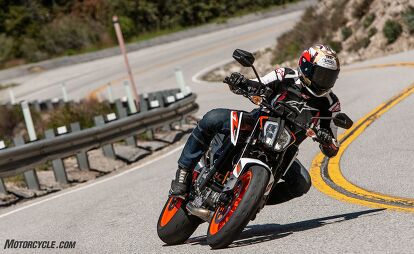
Helmet: Shoei X-14 Motegi 2 $890 (Link is for Motegi 3)
- Jacket: Alpinestars GP Tech v2 For Tech Air Race $1000
- Pants: Alpinestars Crank Riding Jeans $213
- Gloves: Alpinestars SP-2 v2 Gloves $140
Boots: Alpinestars SP-1 Shoes Discontinued
2020 KTM 890 Duke R Specifications | |
|---|---|
| Engine Type | Liquid-cooled, four-valve, DOHC Parallel-Twin, 4-stroke |
| Displacement | 890 cc |
| Bore x Stroke | 90.7 mm / 68.8 mm |
| Compression Ratio | 13.5:1 |
| Starter / Battery | Electric starter / 12V, 10 Ah |
| Transmission | 6 gears |
| Fuel System | DKK Dell’Orto (Throttle body 46 mm) |
| Chain | X-Ring 520 |
| Lubrication | Pressure lubrication with 2 oil pumps |
| Engine Oil | Motorex, Power Synth SAE 10W-50 |
| Clutch | Cable operated PASCTM Slipper clutch |
| Ignition / Engine Management | Bosch EMS with RBW |
| Traction Control | MTC (lean angle sensitive, 3-Mode disengageable + Track mode optional) |
| Frame | Chromium-Molybdenum-Steel frame using the engine as stressed element, powder coated |
| Subframe | Aluminum, powder coated |
| Handlebar | Aluminum, tapered, Ø 28 / 22 mm |
| Front Suspension | WP APEX 43 (compression, rebound adjustable) 5.5-inch travel |
| Rear Suspension | WP APEX Monoshock (Compression (high and low speed), rebound, hydraulic preload adjustable), 5.9 inches of travel |
| Front Brake | 2 × Brembo Stylema four piston, radially mounted caliper, brake disc Ø 320 mm |
| Rear Brake | Brembo single piston floating caliper, brake disc Ø 240 mm |
| ABS | Bosch 9.1 MP (incl. Cornering-ABS and super moto mode) |
| Front Wheel | Cast aluminum, 3.50 x 17” |
| Rear Wheel | Cast aluminum, 5.50 x 17” |
| Front Tire | 120/70 x 17 |
| Rear Tire | 180/55 x 17 |
| Silencer | Stainless steel primary and secondary silencer |
| Rake / Trail | 24.3° / 3.9 inches (99.7mm) |
| Wheelbase | 58.3 ± 0.6 inches |
| Ground Clearance | 8.1 in |
| Seat Height | 32.8 in |
| Fuel Capacity | 3.7 gallons |
| Dry Weight | 365.9 pounds (claimed) |

Troy's been riding motorcycles and writing about them since 2006, getting his start at Rider Magazine. From there, he moved to Sport Rider Magazine before finally landing at Motorcycle.com in 2011. A lifelong gearhead who didn't fully immerse himself in motorcycles until his teenage years, Troy's interests have always been in technology, performance, and going fast. Naturally, racing was the perfect avenue to combine all three. Troy has been racing nearly as long as he's been riding and has competed at the AMA national level. He's also won multiple club races throughout the country, culminating in a Utah Sport Bike Association championship in 2011. He has been invited as a guest instructor for the Yamaha Champions Riding School, and when he's not out riding, he's either wrenching on bikes or watching MotoGP.
More by Troy Siahaan












































































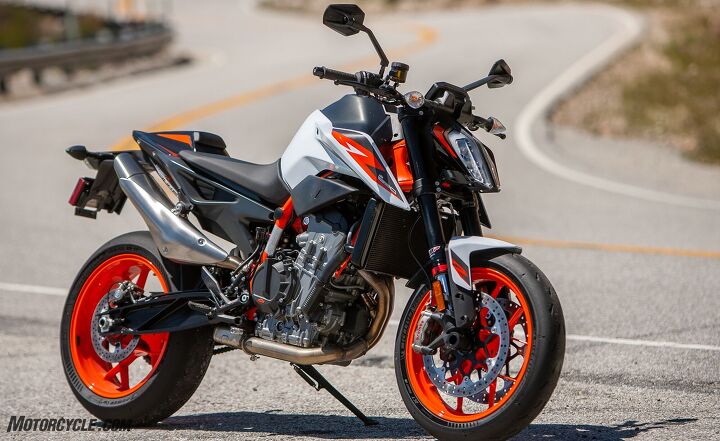














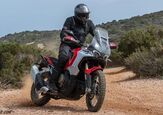



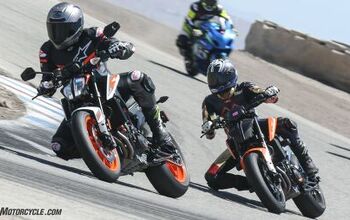
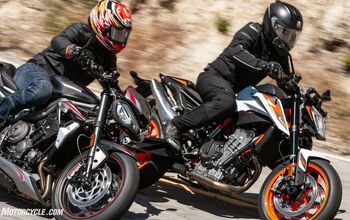













Comments
Join the conversation
just checked 4 dealerships - all the bikes were purchased with money down before the bikes arrived. Good luck finding one!
Four years late here but I'd just like to note that my 2018 RSV4RR quickshifter ALWAYS shifts smoothly regardless of which gear you're shifting to or from (both up AND down). I've never heard this nonsense about not using the QS from 1st to 2nd...